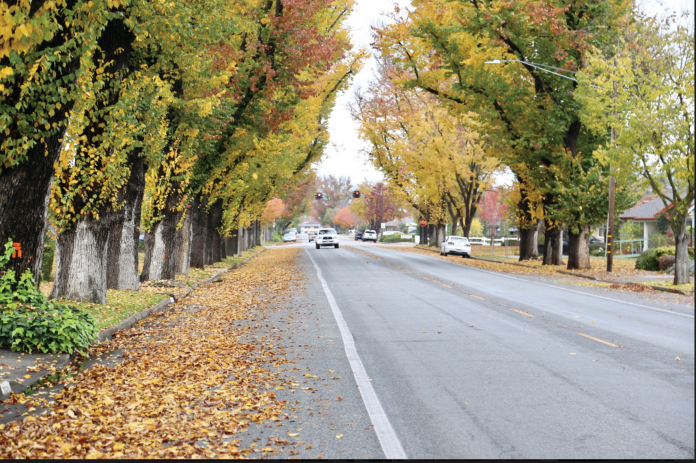Five years of drought and the recent winter storms have wreaked havoc on Gilroy’s trees, according to city staff, and now more than 200 of them are on the chopping block.
On Monday, the Gilroy City Council heard from interim public works director Glenn Roberts that 235 trees – 35 in Christmas Hill Park – need to be removed because they are either diseased, have fallen or are at risk of falling. There is also an urgent need for pruning.
Staff requested $285,000 for tree removal and pruning services from Santa Clara’s West Coast Arborists. Roberts said it would take the contractor 90 business days to complete the removal stage of the job. Ongoing maintenance would continue until June 30.
According to the staff report, the contractor has responded to “numerous emergency tree calls” throughout the city this year, exhausting the city’s tree maintenance funds. There is only $3,000 left in the purchase order.
Council Member Peter Leroe-Munoz wanted to know what routine work and preventative measures are being undertaken by city staff to ensure the city is not stuck with such a large bill in the future.
The city is responsible for maintaining approximately 18,000 trees.
Roberts said he and city administrator, Gabe Gonzalez are currently discussing how to take better care of the city’s trees, including more regular pruning and planting trees to replace the ones that are to be removed.
West Coast Arborists made a series of recommendations for ongoing care in their November assessment of the 572 trees in Christmas Hill Park. Among those were adding mulch below the drip line of trees, establishing a pruning schedule and discontinuing the use of reclaimed water on Coastal Redwoods due to the high salt content. One hundred and ninety three of the trees surveyed were marked as having a poor structure. They also recommended any replanting should be with drought tolerant trees.
Councilmember Cat Tucker voiced concern over the number of trees to be felled and the lack of a plan to replant the trees that will be lost.
“This will have a major impact – we will get pushback from the community,” said Tucker. “I don’t want to see that we will wait two years to replant. Remove and replace should be in parallel.”
Roberts said staff has identified almost 500 locations citywide that may be viable for replanting – they need to check if the spots are close to underground utilities – and estimated the city could plant 100 trees a year over a five-year period.
Tucker later responded that if the city could take down 200 trees in 90 days, the city could surely plant more than 100 per year.
During public comments, downtown property owner Gary Walton said trees are what make a good Main Street. In addition to providing a superior pedestrian experience, they also add other values.
“This is an economic issue for our community,” said Walton. “We are losing our canopy one tree at a time. Look at how we are impacting property values. It takes time for trees to grow – we need to plant now.”
According to the Arbor Day Foundation website, healthy, mature trees can increase property values by 10 percent and make commercial retail areas more attractive to shoppers.
“Studies show that people stay longer and spend more money when there are trees,” said Walton. “A street without trees is a street that people rarely walk.”
Trees also absorb carbon dioxide, a greenhouse gas that contributes to global warming and climate change. According to North Carolina State University College of Agriculture & Life Sciences, a tree can absorb as much as 48 pounds of carbon dioxide per year and can sequester 1 ton of carbon dioxide by the time it reaches 40 years old.
Cutting greenhouse gas emissions is also a state and county priority. In April, Silicon Valley Clean Energy was launched, a new energy provider that provides 100 percent carbon free electricity to customers in Gilroy and 11 other communities in Santa Clara County.
Council Member Dan Harney said it was the lack of a schedule and budget for replacing the 235 removed trees that led him to cast the only dissenting vote on Monday.
“Its pretty obvious why I didn’t vote for it,” he said. “There was no plan.”
Harney also wanted to know why the city had no plan to salvage the lumber from the felled trees, which he said, could be used for the Miller Red Barn restoration at Christmas Hill Park or other uses.
At the city council meeting, Roberts said most of the trees were diseased and have nominal value and the contractor would salvage the lumber.
Harney would also have liked to see the diseased trees given a priority for removal.
“This is a tree loving community and there was no plan.”














